On the Road is a weekday feature spotlighting reader photo submissions.
From the exotic to the familiar, whether you’re traveling or in your own backyard, we would love to see the world through your eyes.
Happy Monday!
(click on image below to see bigger, non-blurry schedule for the week)
Albatrossity
This will be the last installment of the account of a trip to the Palouse in 2015; next week will probably be images from the quickening spring migration period. In May we are headed to Costa Rica (I’ve never been there, but I hear they have some nice birds), and I am greatly looking forward to it. So there will be those in the future as well. But for now, springtime birds from eastern WA are the menu today.
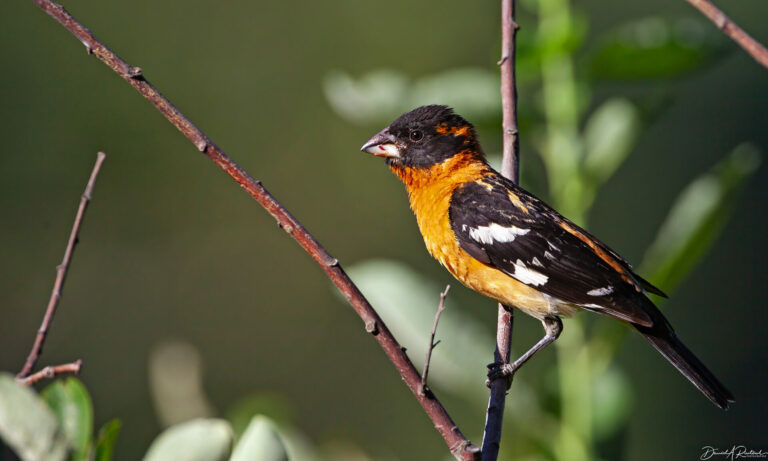
There was an image of the Black-headed Grosbeak (Pheucticus melanocephalus) in a previous installment, but I think these guys are pretty enough for a re-run. Interestingly, I have quite a few images of this species, but very few pictures (and no good ones) of our local congeneric, the Rose-breasted Grosbeak. I do have this amusing low-res video from my bird-banding days, where a grosbeak would seemingly rather chomp on the bander’s hand than fly away free… Bloodthirsty, they are! Click here for larger image.
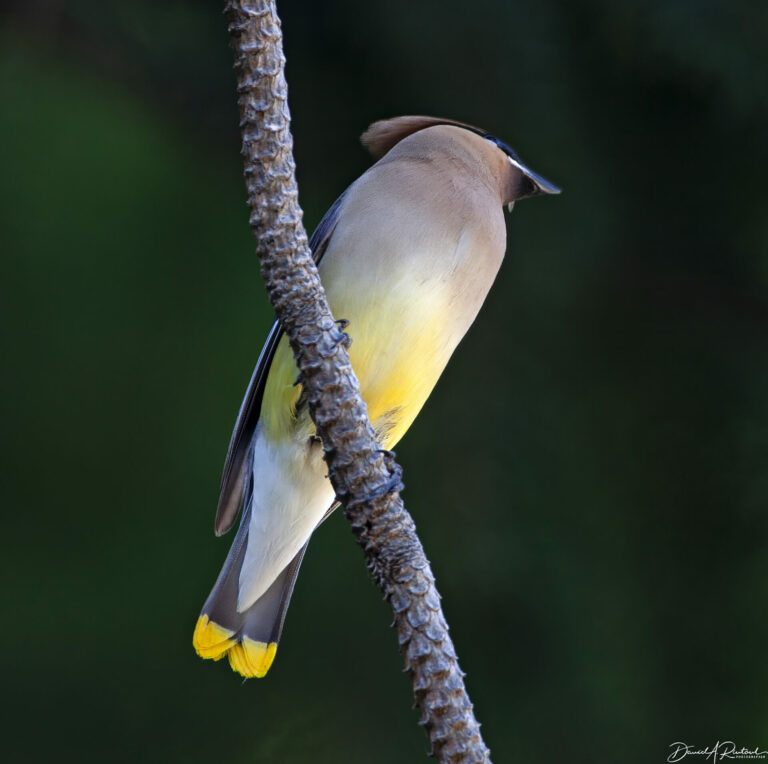
Cedar Waxwings (Bombycilla cedrorum) are a favorite species for many, including me. I like this image because to accentuates the lemon-yellow tones in their coloration, and also really shows off the porcelain-smooth texture of their plumage. Click here for larger image.
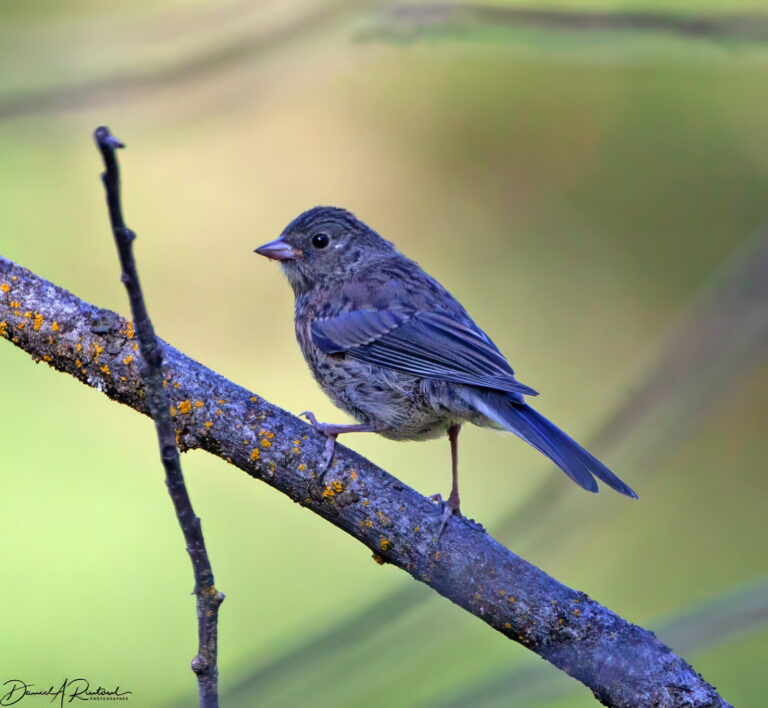
Sparrows, of all species, can be tricky to ID, and the youngsters make that even trickier, since they all have very different plumage patterns than the adults. This juvenile Dark-eyed Junco (Junco hyemalis) was being fed by an adult, so that made the ID easier. But since this is a plumage I don’t see in Flyover Country, it would have probably been a puzzlement without that clue. Click here for larger image.
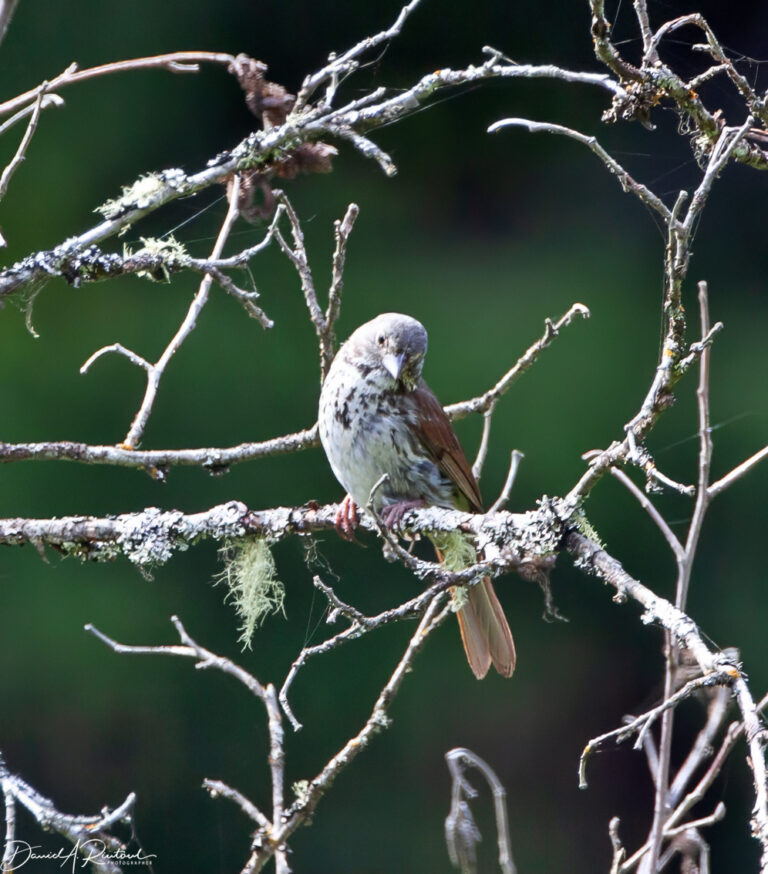
Song Sparrows (Melospiza melodia) have a couple dozen field-identifiable subspecies, and the western birds can look pretty different from those in the eastern USA. But much of the variation in plumage is clinal, with one plumage type blurring to another as a function of geography. This may be M. m. merrilli, but that subspecies has been dismissed by some authorities as merely a clinal form between two other more diverse versions. But at least I readily recognized it as a Song Sparrow, which has not been the case with some of the other subspecies I have run across! Click here for larger image.
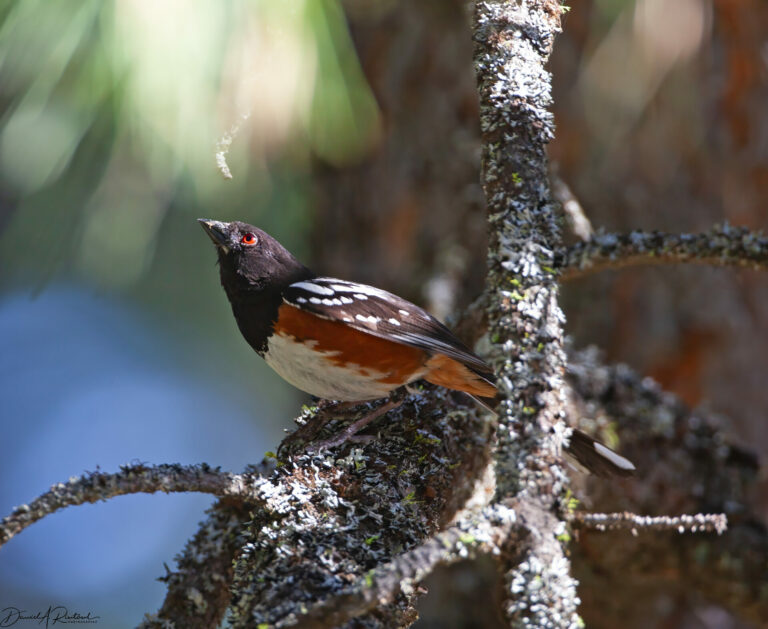
We get Spotted Towhees (Pipilo maculatus) here in Flyover Country in the winter, but those probably come from the northern Plains states. There are a couple dozen identifiable subspecies of this bird as well, but many of those are small isolated populations in Mexico. Interestingly this is probably P. m. arcticus, which is the same subspecies as those that breed in the Dakotas and winter in my part of the country. Click here for larger image.
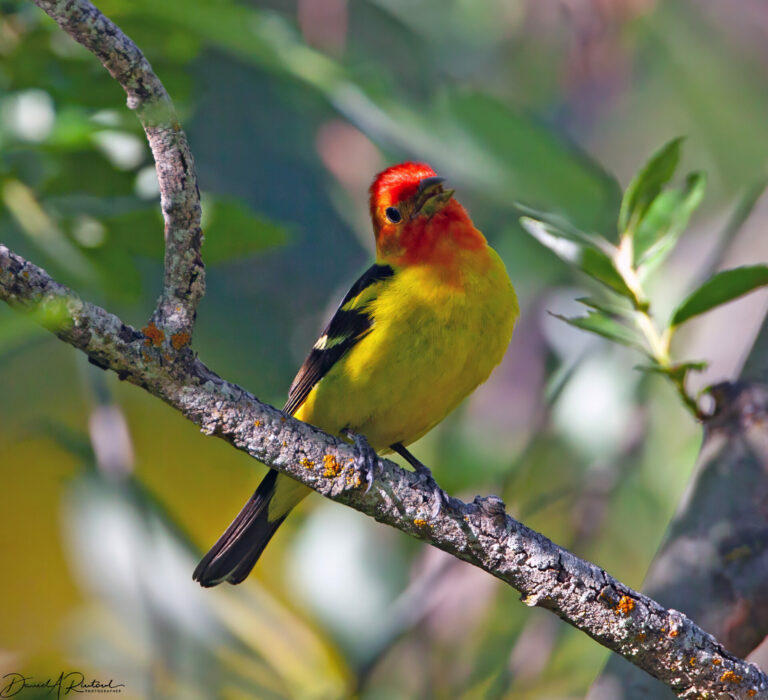
Another Western Tanager (Piranga ludoviciana) was featured in a previous installment of this series, but I included this one today since it has the fully red head of the adult male plumage, and wanted to contrast that with the bird in the next image. Click here for larger image.
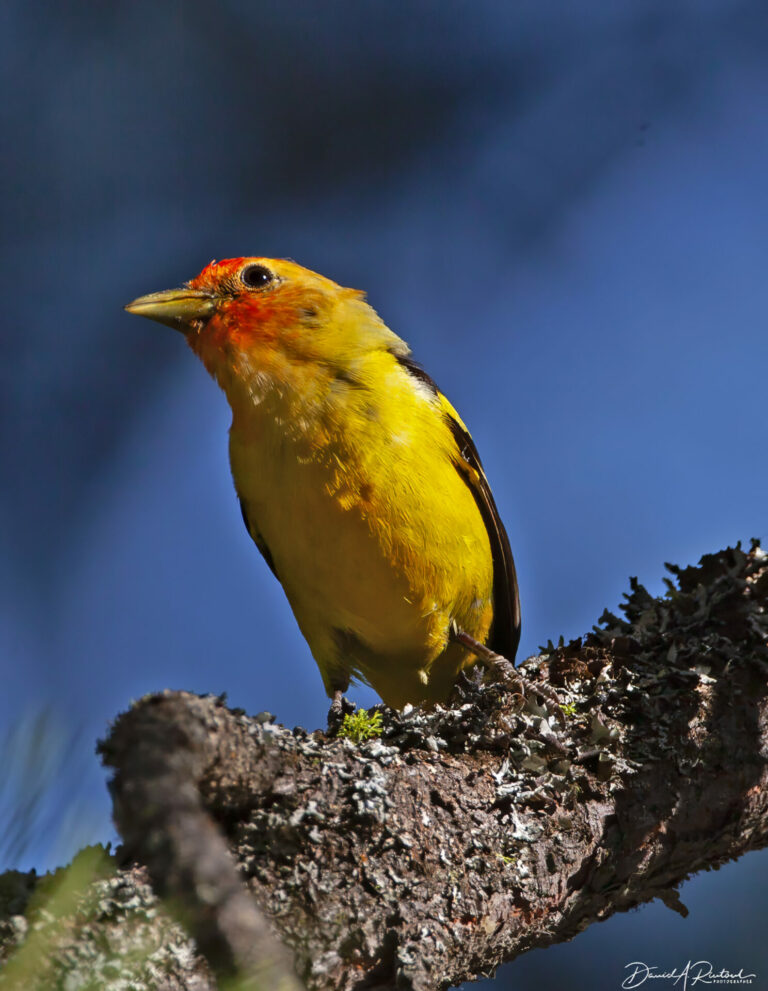
This Western Tanager, with the yellowish tones and reduced red on the head, is a younger male, in its second summer on the planet. Like the other Piranga species, the young males can be identified by plumage, whereas second-summer females look pretty much like older females in all of these species. Click here for larger image.
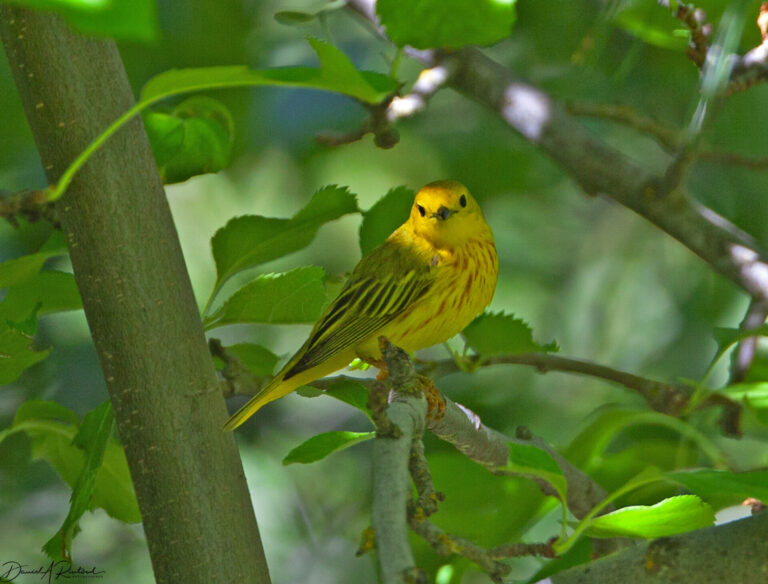
This is a bird that is familiar to birders across North America, Central America, and the Caribbean. Indeed, there is a subspecies that breeds in the Galápagos Archipelago. Yellow Warbler (Setophaga petechia), and a male, based on the red streaking of the upper chest. Click here for larger image.


eclare
The warbler photo is so pretty with the yellow and all the different shades of green. He also seems to be looking right at you!
JPL
For Christmas my children gave me a Bird Buddy and I have visits from both a chipping and a song sparrow although I now have one less sparrow. A hawk couldn’t resist taking one. If it continues to happen, I’ll take the feeder down for a few days.
zhena gogolia
I always wanted to see a cedar waxwing.
Eyeroller
@zhena gogolia: More likely you’ll see a flock since little of the US is in their breeding range. The only time I’ve ever seen them was on campus when certain trees in a mass planting were fruiting. A flock would come through and strip the trees, then move on.
OzarkHillbilly
I have rose breasted grosbeaks every spring for a brief visit and then they move on to more northerly forests. One year I got all kinds of excited when a blue grosbeak paid me a visit. Only once. :-(
@JPL: Now that is discrimination. HAWK LIVES MATTER!
On the more serious side, it does happen. I’ve never had a repeat offender (except for a young Cooper’s hawk that found my chickens to be easy pickins) but I don’t feed the songbirds in late spring, summer, or early fall as there is plenty of food available at those times.
@Eyeroller: Yep. I saw a flock only once doing exactly that.
SteveinPHX
I still have a vivid memory of the first Yellow Warbler I ever saw in some NJ woods. Perched above me on a tree branch with a blue sky background.
Thanks for the photos!
S Cerevisiae
Thanks again for all the great photos! You will absolutely love Costa Rica, if you get to Monteverde check out the hummingbird gallery next to the reserve, the violet sabrewings sound like helicopters as they buzz by your head. In the lowlands the little honeycreepers and tanagers are like sparkling gems flashing through the understory. It’s a magical place.
Betty
Porcelain-smooth texture – perfect description of a beautiful bird.
WaterGirl
I love the blue sparrow!!
Albatrossity
@JPL: Hawks are birds, Hawks have to eat. I’d rather see a hawk at my feeder than a feral cat, for sure. They are a natural part of life for any wild bird, and they will never kill just for sport.
@Eyeroller: Actually, Cedar Waxwings are summer birds in much of the country, including my corner of Kansas. But since they are in pairs rather than in large noisy flocks, and mostly silent while they go about the business of raising kids, they are harder to see in the summer.
StringOnAStick
@S Cerevisiae: Agreeing here that as a birder, you are going to love Costa Rica. We went on a sponsored night time hike (needs to be a tour, there are scary big cats in the woods at night, plus the typical kill you dead snakes) in the park, and what are hummingbird feeders during the day are bat feeders at night; it was glorious to see them.
Madeleine
What a spectacular shot of the cedar waxwing! You can even see the underside of the overhanging cap at the back of its head!
My first sight of them was a small flock in a tree out my office window in Philadelphia. It was such a happy surprise!
Mike Mundy
So, we’ve seen Cedar Waxwings here in Marin County . . . once. In 2018.
Albatrossity
@Mike Mundy: Interesting, The eBird data says that they are in Marin County year-round, except perhaps in mid-summer (when they may be there, but not very vocal or obvious)
And I clicked on the link for your blog. There are some very nice photos there! Except for the cybertruck shot, of course :-)
Dan B
May in Costa Rica is the rainy season but not the most rainy. My impression is there are more birds on the Carribean side of CR but that’s likely because we’ve only been in the dry season which lasts for months on the Pacific side.
There is an abundance of wildlife – tropical wildlife. We’ve regaled our friends with tales of the ranger from Manuel Antonio National Park recruiting a tourist from our guest house to help grab the ten foot crocodile from the lagoon and move it far away in the park. The Pacific Coast east of Manuel Antonio is like an undiscovered Tahiti. Verdant mountains rise from deserted beaches. Tiny restaurants in the valleys cook fresh fish and more from the fishermen in tiny villages on the shore.
Albatrossity
@Dan B: We are going with a Study Abroad class; Elizabeth is teaching a course in nature writing, and two other KSU professors are teaching courses in biology and geography. Students can take one or two courses, see Costa Rica, do some additional assignments over the summer, and get 3 (or 6) hours of college credit for this experience. I am going along as arm candy.
Since the trip is focused on the students, I don’t have control over where we are going. But I will take the camera, and endeavor to get a photo of any bird that shows up in front of it, no matter where we are. One of the places is a research station devoted to learning about Resplendent Quetzals, so I hope to see those. Anything else will be gravy!